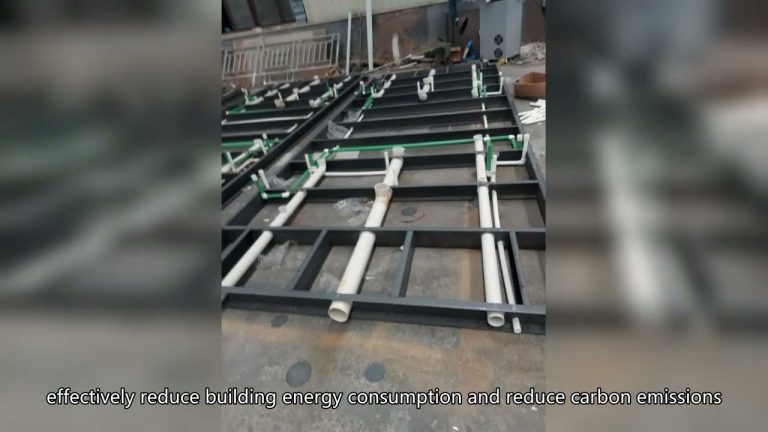Waterproof and moisture-proof treatment of the box room
Table of Contents
Benefits of Waterproofing and Moisture-Proofing Your Box Room
Waterproofing and moisture-proofing your box room is essential to protect your belongings and maintain the structural integrity of your home. Moisture can seep into walls, floors, and ceilings, leading to mold growth, rot, and damage to your possessions. By taking proactive measures to waterproof and moisture-proof your box room, you can prevent these issues and create a healthier living environment for you and your family.
One of the main benefits of waterproofing and moisture-proofing your box room is the prevention of mold growth. Mold thrives in damp, humid environments, and once it takes hold, it can be difficult to eradicate. Not only is mold unsightly and unpleasant smelling, but it can also pose serious health risks, especially for those with respiratory conditions. By sealing off any potential entry points for moisture and ensuring proper ventilation, you can significantly reduce the risk of mold growth in your box room.
In addition to preventing mold, waterproofing and moisture-proofing your box room can also help protect your belongings from water damage. Whether you use your box room for storage or as a living space, the last thing you want is for your possessions to be ruined by water infiltration. By applying waterproof coatings to walls and floors, installing moisture barriers, and sealing off any cracks or gaps, you can create a watertight environment that will keep your belongings safe and dry.
Furthermore, waterproofing and moisture-proofing your box room can also help to preserve the structural integrity of your home. Water damage can weaken the foundation, walls, and ceilings of your house, leading to costly repairs and potentially dangerous structural issues. By taking preventative measures to keep moisture out of your box room, you can protect the overall stability of your home and avoid the headache of dealing with extensive repairs down the line.
Another benefit of waterproofing and moisture-proofing your box room is the potential energy savings. A damp, poorly insulated room can be a breeding ground for mold and mildew, which can increase humidity levels and make it harder to regulate the temperature. By sealing off any sources of moisture and ensuring proper insulation, you can create a more energy-efficient space that will help you save on heating and cooling costs.

In conclusion, waterproofing and moisture-proofing your box room is a smart investment that can provide a range of benefits for you and your home. From preventing mold growth and water damage to preserving the structural integrity of your house and saving on energy costs, there are plenty of reasons to take proactive steps to keep moisture out of your box room. By working with a professional contractor to assess your needs and implement the right waterproofing solutions, you can enjoy a dry, healthy, and comfortable living space for years to come.
Step-by-Step Guide to Waterproofing and Moisture-Proofing Your Box Room
Waterproofing and moisture-proofing a box room is essential to protect the contents of the room from water damage and mold growth. Whether you are converting a basement into a living space or simply want to ensure that your storage area remains dry, taking the necessary steps to waterproof and moisture-proof the room is crucial. In this article, we will provide you with a step-by-step guide on how to effectively waterproof and moisture-proof your box room.
The first step in waterproofing and moisture-proofing your box room is to identify any existing water leaks or moisture issues. Inspect the walls, floors, and ceiling for any signs of water damage, such as damp spots, mold growth, or peeling paint. If you notice any of these issues, it is important to address them before proceeding with the waterproofing process.
Once you have identified and addressed any existing water leaks or moisture issues, the next step is to seal any cracks or gaps in the walls, floors, and ceiling. Use a waterproof sealant to fill in any cracks or gaps, paying special attention to areas where water is likely to seep in, such as around windows, doors, and pipes. This will help prevent water from entering the room and causing damage.
After sealing any cracks or gaps, the next step is to apply a waterproofing membrane to the walls and floors of the box room. A waterproofing membrane is a thin layer of material that is applied to the surface of the walls and floors to prevent water from penetrating. There are a variety of waterproofing membranes available, including liquid-applied membranes, sheet membranes, and cementitious membranes. Choose the type of membrane that is best suited for your specific needs and follow the manufacturer’s instructions for application.
In addition to applying a waterproofing membrane, it is also important to install a vapor barrier in the box room. A vapor barrier is a material that is placed on the warm side of the insulation to prevent moisture from entering the room. This will help prevent condensation from forming on the walls and ceiling, which can lead to mold growth and water damage.
Once you have applied a waterproofing membrane and installed a vapor barrier, the final step is to ensure proper ventilation in the box room. Good ventilation is essential for preventing moisture buildup and maintaining a dry environment. Install vents or exhaust fans to allow fresh air to circulate throughout the room, and consider using a dehumidifier to remove excess moisture from the air.
In conclusion, waterproofing and moisture-proofing a box room is essential for protecting the contents of the room from water damage and mold growth. By following the steps outlined in this article, you can effectively waterproof and moisture-proof your box room and ensure that it remains dry and safe for years to come. Remember to regularly inspect the room for any signs of water damage or moisture issues and address them promptly to prevent further damage.







